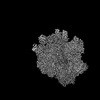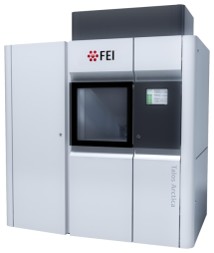[English] 日本語
 Yorodumi
Yorodumi- PDB-9g6k: LSU structure derived from the LSU sample of the mitoribosome fro... -
+ Open data
Open data
- Basic information
Basic information
| Entry | Database: PDB / ID: 9g6k | ||||||
|---|---|---|---|---|---|---|---|
| Title | LSU structure derived from the LSU sample of the mitoribosome from T. gondii. | ||||||
 Components Components |
| ||||||
 Keywords Keywords | RIBOSOME / Complex / translation / rRNA | ||||||
| Function / homology |  Function and homology information Function and homology informationregulation of mitochondrial mRNA stability / ribonucleoprotein granule / mitochondrial RNA processing / mitochondrial large ribosomal subunit / mitochondrial translation / cyclosporin A binding / peptidylprolyl isomerase / peptidyl-prolyl cis-trans isomerase activity / ubiquitin-protein transferase activity / protein folding ...regulation of mitochondrial mRNA stability / ribonucleoprotein granule / mitochondrial RNA processing / mitochondrial large ribosomal subunit / mitochondrial translation / cyclosporin A binding / peptidylprolyl isomerase / peptidyl-prolyl cis-trans isomerase activity / ubiquitin-protein transferase activity / protein folding / large ribosomal subunit / transferase activity / 5S rRNA binding / large ribosomal subunit rRNA binding / cytosolic large ribosomal subunit / negative regulation of translation / rRNA binding / structural constituent of ribosome / ribosome / translation / mitochondrial matrix / DNA-binding transcription factor activity / ribonucleoprotein complex / mRNA binding / DNA binding / RNA binding / nucleus / membrane / cytoplasm Similarity search - Function | ||||||
| Biological species |  | ||||||
| Method | ELECTRON MICROSCOPY / single particle reconstruction / cryo EM / Resolution: 2.89 Å | ||||||
 Authors Authors | Rocha, R.E.O. / Barua, S. / Boissier, F. / Nguyen, T.T. / Hashem, Y. | ||||||
| Funding support | European Union, 1items
| ||||||
 Citation Citation |  Journal: Nat Commun / Year: 2024 Journal: Nat Commun / Year: 2024Title: Apicomplexan mitoribosome from highly fragmented rRNAs to a functional machine. Authors: Chaoyue Wang / Sari Kassem / Rafael Eduardo Oliveira Rocha / Pei Sun / Tan-Trung Nguyen / Joachim Kloehn / Xianyong Liu / Lorenzo Brusini / Alessandro Bonavoglia / Sramona Barua / Fanny ...Authors: Chaoyue Wang / Sari Kassem / Rafael Eduardo Oliveira Rocha / Pei Sun / Tan-Trung Nguyen / Joachim Kloehn / Xianyong Liu / Lorenzo Brusini / Alessandro Bonavoglia / Sramona Barua / Fanny Boissier / Mayara Lucia Del Cistia / Hongjuan Peng / Xinming Tang / Fujie Xie / Zixuan Wang / Oscar Vadas / Xun Suo / Yaser Hashem / Dominique Soldati-Favre / Yonggen Jia /    Abstract: The phylum Apicomplexa comprises eukaryotic parasites that cause fatal diseases affecting millions of people and animals worldwide. Their mitochondrial genomes have been significantly reduced, ...The phylum Apicomplexa comprises eukaryotic parasites that cause fatal diseases affecting millions of people and animals worldwide. Their mitochondrial genomes have been significantly reduced, leaving only three protein-coding genes and highly fragmented mitoribosomal rRNAs, raising challenging questions about mitoribosome composition, assembly and structure. Our study reveals how Toxoplasma gondii assembles over 40 mt-rRNA fragments using exclusively nuclear-encoded mitoribosomal proteins and three lineage-specific families of RNA-binding proteins. Among these are four proteins from the Apetala2/Ethylene Response Factor (AP2/ERF) family, originally known as transcription factors in plants and Apicomplexa, now repurposed as essential mitoribosome components. Cryo-EM analysis of the mitoribosome structure demonstrates how these AP2 proteins function as RNA binders to maintain mitoribosome integrity. The mitoribosome is also decorated with members of lineage-specific RNA-binding proteins belonging to RAP (RNA-binding domain abundant in Apicomplexa) proteins and HPR (heptatricopeptide repeat) families, highlighting the unique adaptations of these parasites. Solving the molecular puzzle of apicomplexan mitoribosome could inform the development of therapeutic strategies targeting organellar translation. #1: Journal: Protein Sci / Year: 2018 Title: UCSF ChimeraX: Meeting modern challenges in visualization and analysis. Authors: Thomas D Goddard / Conrad C Huang / Elaine C Meng / Eric F Pettersen / Gregory S Couch / John H Morris / Thomas E Ferrin /  Abstract: UCSF ChimeraX is next-generation software for the visualization and analysis of molecular structures, density maps, 3D microscopy, and associated data. It addresses challenges in the size, scope, and ...UCSF ChimeraX is next-generation software for the visualization and analysis of molecular structures, density maps, 3D microscopy, and associated data. It addresses challenges in the size, scope, and disparate types of data attendant with cutting-edge experimental methods, while providing advanced options for high-quality rendering (interactive ambient occlusion, reliable molecular surface calculations, etc.) and professional approaches to software design and distribution. This article highlights some specific advances in the areas of visualization and usability, performance, and extensibility. ChimeraX is free for noncommercial use and is available from http://www.rbvi.ucsf.edu/chimerax/ for Windows, Mac, and Linux. #2: Journal: Protein Sci / Year: 2021 Title: UCSF ChimeraX: Structure visualization for researchers, educators, and developers. Authors: Eric F Pettersen / Thomas D Goddard / Conrad C Huang / Elaine C Meng / Gregory S Couch / Tristan I Croll / John H Morris / Thomas E Ferrin /   Abstract: UCSF ChimeraX is the next-generation interactive visualization program from the Resource for Biocomputing, Visualization, and Informatics (RBVI), following UCSF Chimera. ChimeraX brings (a) ...UCSF ChimeraX is the next-generation interactive visualization program from the Resource for Biocomputing, Visualization, and Informatics (RBVI), following UCSF Chimera. ChimeraX brings (a) significant performance and graphics enhancements; (b) new implementations of Chimera's most highly used tools, many with further improvements; (c) several entirely new analysis features; (d) support for new areas such as virtual reality, light-sheet microscopy, and medical imaging data; (e) major ease-of-use advances, including toolbars with icons to perform actions with a single click, basic "undo" capabilities, and more logical and consistent commands; and (f) an app store for researchers to contribute new tools. ChimeraX includes full user documentation and is free for noncommercial use, with downloads available for Windows, Linux, and macOS from https://www.rbvi.ucsf.edu/chimerax. #3:  Journal: Acta Crystallogr D Struct Biol / Year: 2018 Journal: Acta Crystallogr D Struct Biol / Year: 2018Title: ISOLDE: a physically realistic environment for model building into low-resolution electron-density maps. Authors: Tristan Ian Croll /  Abstract: This paper introduces ISOLDE, a new software package designed to provide an intuitive environment for high-fidelity interactive remodelling/refinement of macromolecular models into electron-density ...This paper introduces ISOLDE, a new software package designed to provide an intuitive environment for high-fidelity interactive remodelling/refinement of macromolecular models into electron-density maps. ISOLDE combines interactive molecular-dynamics flexible fitting with modern molecular-graphics visualization and established structural biology libraries to provide an immersive interface wherein the model constantly acts to maintain physically realistic conformations as the user interacts with it by directly tugging atoms with a mouse or haptic interface or applying/removing restraints. In addition, common validation tasks are accelerated and visualized in real time. Using the recently described 3.8 Å resolution cryo-EM structure of the eukaryotic minichromosome maintenance (MCM) helicase complex as a case study, it is demonstrated how ISOLDE can be used alongside other modern refinement tools to avoid common pitfalls of low-resolution modelling and improve the quality of the final model. A detailed analysis of changes between the initial and final model provides a somewhat sobering insight into the dangers of relying on a small number of validation metrics to judge the quality of a low-resolution model. | ||||||
| History |
|
- Structure visualization
Structure visualization
| Structure viewer | Molecule:  Molmil Molmil Jmol/JSmol Jmol/JSmol |
|---|
- Downloads & links
Downloads & links
- Download
Download
| PDBx/mmCIF format |  9g6k.cif.gz 9g6k.cif.gz | 4.3 MB | Display |  PDBx/mmCIF format PDBx/mmCIF format |
|---|---|---|---|---|
| PDB format |  pdb9g6k.ent.gz pdb9g6k.ent.gz | Display |  PDB format PDB format | |
| PDBx/mmJSON format |  9g6k.json.gz 9g6k.json.gz | Tree view |  PDBx/mmJSON format PDBx/mmJSON format | |
| Others |  Other downloads Other downloads |
-Validation report
| Summary document |  9g6k_validation.pdf.gz 9g6k_validation.pdf.gz | 2.1 MB | Display |  wwPDB validaton report wwPDB validaton report |
|---|---|---|---|---|
| Full document |  9g6k_full_validation.pdf.gz 9g6k_full_validation.pdf.gz | 3.2 MB | Display | |
| Data in XML |  9g6k_validation.xml.gz 9g6k_validation.xml.gz | 481.3 KB | Display | |
| Data in CIF |  9g6k_validation.cif.gz 9g6k_validation.cif.gz | 774 KB | Display | |
| Arichive directory |  https://data.pdbj.org/pub/pdb/validation_reports/g6/9g6k https://data.pdbj.org/pub/pdb/validation_reports/g6/9g6k ftp://data.pdbj.org/pub/pdb/validation_reports/g6/9g6k ftp://data.pdbj.org/pub/pdb/validation_reports/g6/9g6k | HTTPS FTP |
-Related structure data
| Related structure data |  51104MC  9fi8C  9fiaC  50492 C: citing same article ( M: map data used to model this data |
|---|---|
| Similar structure data | Similarity search - Function & homology  F&H Search F&H Search |
- Links
Links
- Assembly
Assembly
| Deposited unit | 
|
|---|---|
| 1 |
|
- Components
Components
+Protein , 35 types, 35 molecules L0L2L3L6L7L9LCLELFLILKLLLNLOLPLQLRLVLXLYLZLfLjLnLpLtLuLvLxLz...
+Large ribosomal subunit protein ... , 10 types, 10 molecules L1LMLSLULaLgLhLlLmLy
+RAP domain-containing ... , 8 types, 8 molecules L4LJLbLcLdLeLiLq
+Protein/peptide , 3 types, 3 molecules L5UHUI
+Putative 50S ribosomal protein ... , 5 types, 5 molecules L8LALTLWLw
+Putative ribosomal protein ... , 2 types, 2 molecules LBLr
+Ribosomal protein ... , 4 types, 4 molecules LDLGLHLs
+AP2 domain transcription factor ... , 2 types, 2 molecules LkUG
+Transmembrane ... , 2 types, 2 molecules LoUD
+RNA chain , 33 types, 35 molecules l0l1l2l3l4l5l6l7l8l9lAlBlClDlElFlGlHlIlJlKlLlMlNlOlPlQlRlSlT...
+Details
-Experimental details
-Experiment
| Experiment | Method: ELECTRON MICROSCOPY |
|---|---|
| EM experiment | Aggregation state: PARTICLE / 3D reconstruction method: single particle reconstruction |
- Sample preparation
Sample preparation
| Component | Name: LSU structure derived from the LSU sample of the mitoribosome from T. gondii. Type: RIBOSOME / Entity ID: all / Source: NATURAL |
|---|---|
| Source (natural) | Organism:  |
| Buffer solution | pH: 7.5 |
| Specimen | Embedding applied: NO / Shadowing applied: NO / Staining applied: NO / Vitrification applied: YES |
| Specimen support | Grid material: COPPER / Grid type: Quantifoil R2/2 |
| Vitrification | Cryogen name: ETHANE / Humidity: 100 % / Chamber temperature: 277 K / Details: Blotting force 5, blotting time 2.5 seconds. |
- Electron microscopy imaging
Electron microscopy imaging
| Experimental equipment |  Model: Talos Arctica / Image courtesy: FEI Company |
|---|---|
| Microscopy | Model: FEI TALOS ARCTICA |
| Electron gun | Electron source:  FIELD EMISSION GUN / Accelerating voltage: 200 kV / Illumination mode: FLOOD BEAM FIELD EMISSION GUN / Accelerating voltage: 200 kV / Illumination mode: FLOOD BEAM |
| Electron lens | Mode: BRIGHT FIELD / Nominal magnification: 59000 X / Nominal defocus max: 2500 nm / Nominal defocus min: 500 nm / Cs: 2.7 mm / C2 aperture diameter: 30 µm / Alignment procedure: COMA FREE |
| Specimen holder | Cryogen: NITROGEN / Specimen holder model: FEI TITAN KRIOS AUTOGRID HOLDER / Temperature (max): 95 K / Temperature (min): 90 K |
| Image recording | Average exposure time: 6 sec. / Electron dose: 50 e/Å2 / Detector mode: COUNTING / Film or detector model: GATAN K2 SUMMIT (4k x 4k) / Num. of grids imaged: 1 / Num. of real images: 9524 |
| Image scans | Sampling size: 6.35 µm / Width: 4096 / Height: 4096 / Movie frames/image: 40 / Used frames/image: 1-40 |
- Processing
Processing
| EM software |
| ||||||||||||||||||||||||
|---|---|---|---|---|---|---|---|---|---|---|---|---|---|---|---|---|---|---|---|---|---|---|---|---|---|
| CTF correction | Type: PHASE FLIPPING AND AMPLITUDE CORRECTION | ||||||||||||||||||||||||
| Particle selection | Num. of particles selected: 280177 | ||||||||||||||||||||||||
| 3D reconstruction | Resolution: 2.89 Å / Resolution method: FSC 0.143 CUT-OFF / Num. of particles: 22169 / Algorithm: BACK PROJECTION / Num. of class averages: 1 / Symmetry type: POINT | ||||||||||||||||||||||||
| Atomic model building | Protocol: AB INITIO MODEL / Space: REAL | ||||||||||||||||||||||||
| Atomic model building | Source name: Modeller / Type: in silico model |
 Movie
Movie Controller
Controller





 PDBj
PDBj


































